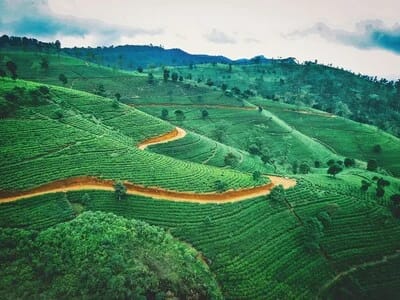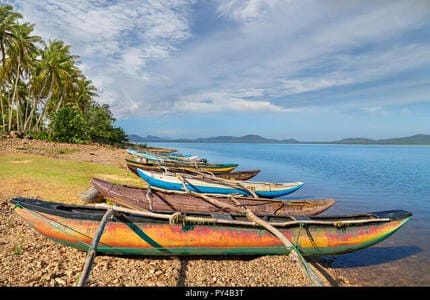A Whisper of Cinnamon and Thunderstorms
Sri Lanka, a teardrop-shaped island nestled in the Indian Ocean, is often introduced as a land of pristine beaches and ancient ruins. But dig beneath the surface. past the surfboards and spice markets, and you’ll uncover a quieter, richer narrative: one of forgotten kingdoms, monsoon-whispering jungles, and communities shaped by centuries of trade, invasion, resilience, and reinvention.
Unlike the over-exposed temples of Angkor Wat or the tourist-thronged beaches of Bali, Sri Lanka holds its essence like a poem – folded, subtle, and intensely personal for those who pay attention.
The Town Where Time Sleeps: Jaffna’s Slow Revival
Jaffna, once the cultural heart of northern Sri Lanka, still carries the faint scars of a civil war that stretched across 3 decades. But walk its dusty lanes today, and you’ll sense more than history, you’ll sense healing. The Nallur Kandaswamy Kovil, with its drumming rituals and saffron-robed priests, stands not just as a temple but a heartbeat, pulsing through the community.
Here, bookstores still sell Tamil poetry collections bound in cloth, and the air smells like palmyra sweets and ink. While Colombo rockets ahead in sleek development, Jaffna reminds you that slowness – deliberate, graceful slowness – can be its own kind of progress.
Tea Without the Tour: Hidden Estates of Haputale

Forget the photoshopped tea fields of Nuwara Eliya. For a more intimate sip of Ceylon’s most famous export, head to Haputale in Uva Province – not the well-worn Lipton’s Seat, but the unnamed estates tucked behind mist-shrouded hills. Here, Tamil tea pluckers still rise with the mist, their laughter mingling with the wind as they move like poetry through emerald terraces.
Some estate bungalows have been lovingly restored into family-run homestays. These aren’t polished retreats, rather they are humble windows into estate life – creaky floorboards, overgrown orchids, and stories about monsoons and memories, served with thick roti and ginger tea.
The Sound of the Forest Thinking: Sinharaja After Rain
In the southern region of the island, the Sinharaja Rainforest is not where most tourists go – not because it’s inaccessible, but because it’s alive in a way that resists the camera lens. There’s no iconic animal to chase here. Instead, you get the surreal experience of standing still while everything else pulses. Trees whisper. Frogs blink in impossible colours. And once the rain stops, the whole forest exhales.
The locals say Sinharaja isn’t a forest you ‘visit’. It’s a forest that ‘listens’ to you. That’s an eerie, wonderful thing, knowing that you’re part of something older than religion, older than maps.
Forgotten Coastline: Mannar’s Salty Silence

Far from the poster beaches of Mirissa and Unawatuna, the Mannar coast in the north west of Sri Lanka feels like a forgotten paragraph in a history book. Wind-lashed and wide open, this place once thrummed with pearl divers and Arab traders. Now, it’s hauntingly quiet. Donkeys roam the salt flats. Baobab trees twist into impossible shapes. And a 100-year-old railway line sighs into the horizon like a story half-told.
Here, fishermen still launch their catamarans at dawn, and every conversation carries the gentleness of people who have lived close to absence – of rain, of tourists, of noise. It’s not bustling. It’s beautiful because it’s not.
The Language of Lanterns and Letters
Beyond its landscapes, Sri Lanka’s identity is stitched together by the languages of its people – Sinhala, Tamil, English, and the dialects between. In Batticaloa, young girls light oil lamps during Karthigai Deepam in temples that shimmer in candlelight, while nearby, the local public library quietly hosts poetry readings in 3 languages at once.
Sri Lanka’s greatest beauty might not be visible in its geography at all, but in its multiplicity of stories. Each one – Buddhist monk, Muslim shopkeeper, Tamil schoolteacher, Burgher violinist – carries a different key to understanding the island’s soul.
The Real Treasure Island? Maybe
There’s a local legend that the Portuguese, Dutch, and British came for spices – but stayed, in different ways, because the island quietly seduced them. Not with grandeur. Not with gold. But with something more elusive: the ability to change you.
Sri Lanka doesn’t impress with scale. Instead, it lingers in your lungs like cardamom smoke, in your mind like a verse you can’t forget. It’s not a destination you tick off. It’s a mood. A memory. A murmur that stays.
Final Thoughts: Don’t Just Visit – Listen
To travel to Sri Lanka is to walk into a long, ongoing conversation. Between ocean and land. Between memory and ambition. Between silence and music.
The guidebooks won’t tell you this. But if you find yourself in a roadside diner at 10 pm, sipping lime soda with a stranger who switches between 5 languages while quoting Rabindranath Tagore, you’ll understand. You didn’t just visit Sri Lanka. You let it rewrite a piece of you. Quietly. Completely.